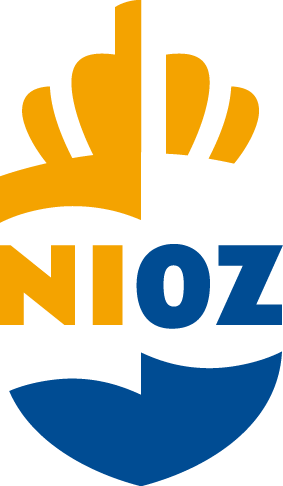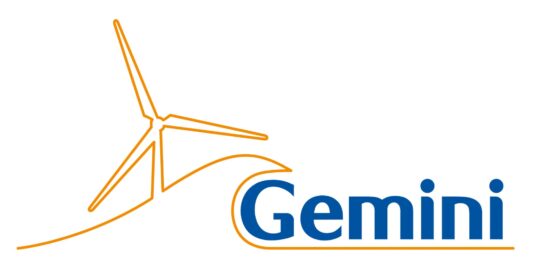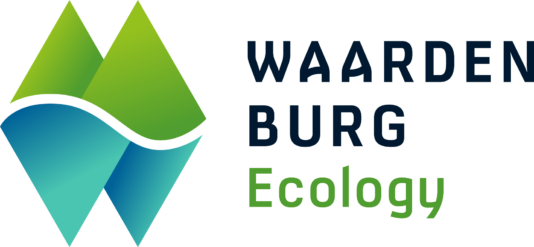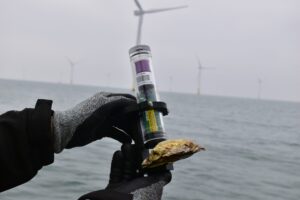Gemini Offshore Wind Farm provided access to the site, making the project possible. NIOZ developed sensor-equipped frames and systems, while Waterproof ensured their stability. Waardenburg Ecology conducted ROV monitoring, focusing on released oysters. Wageningen Marine Research led oyster development analysis, determining monitoring timing and assessing spat collection. Each partner played a key role in advancing marine restoration.
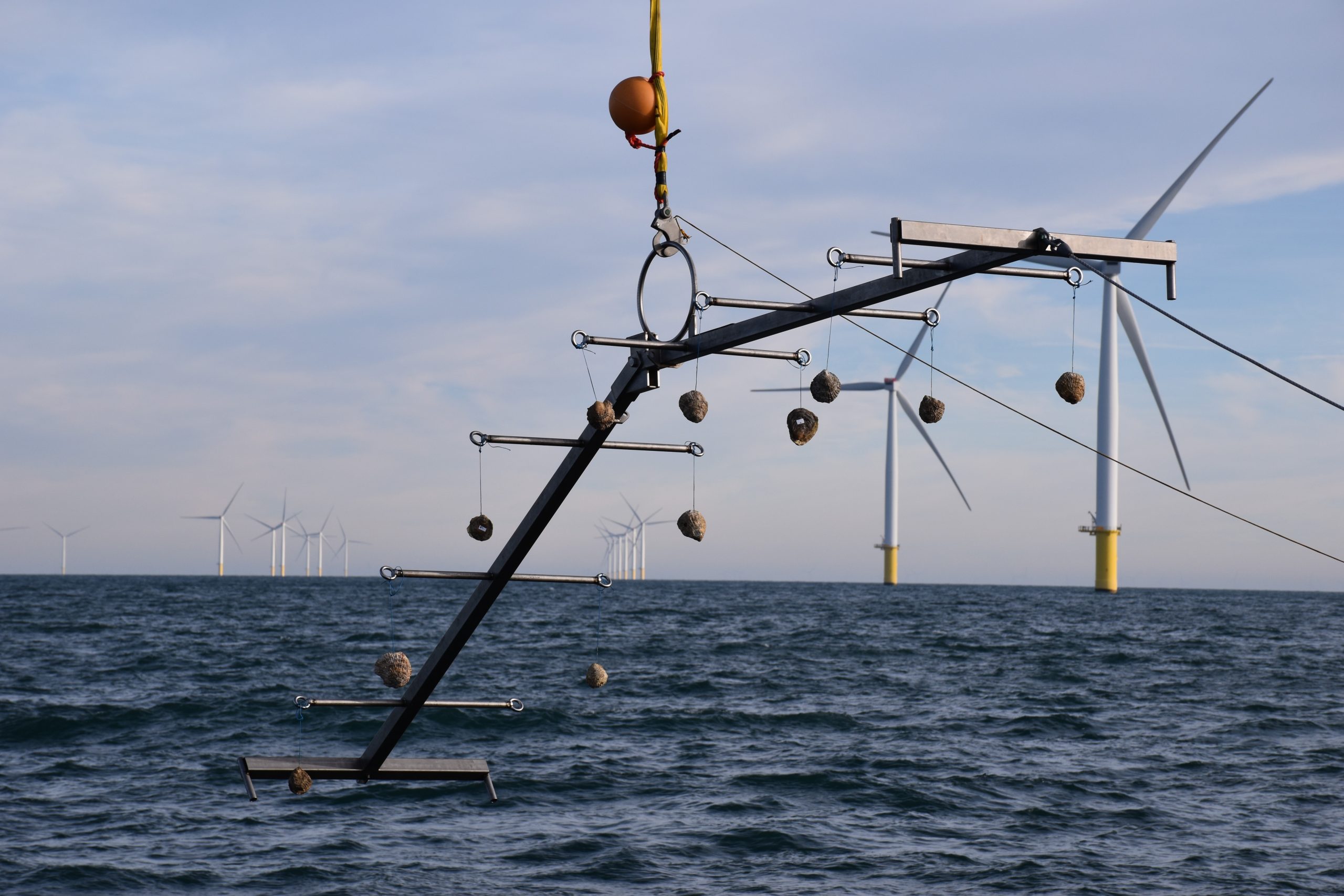
Gemini
Can a lost oyster reef finally be restored?
This project aims to construct an oyster bank of approximately 5 hectares at Gemini Offshore Wind Farm. Over time, we will study the growth, survival, reproduction and settlement of the oysters. Using innovative research methods, we will discover which conditions are optimal for oysters to feed, and whether they remain stable or move through the wind farm.
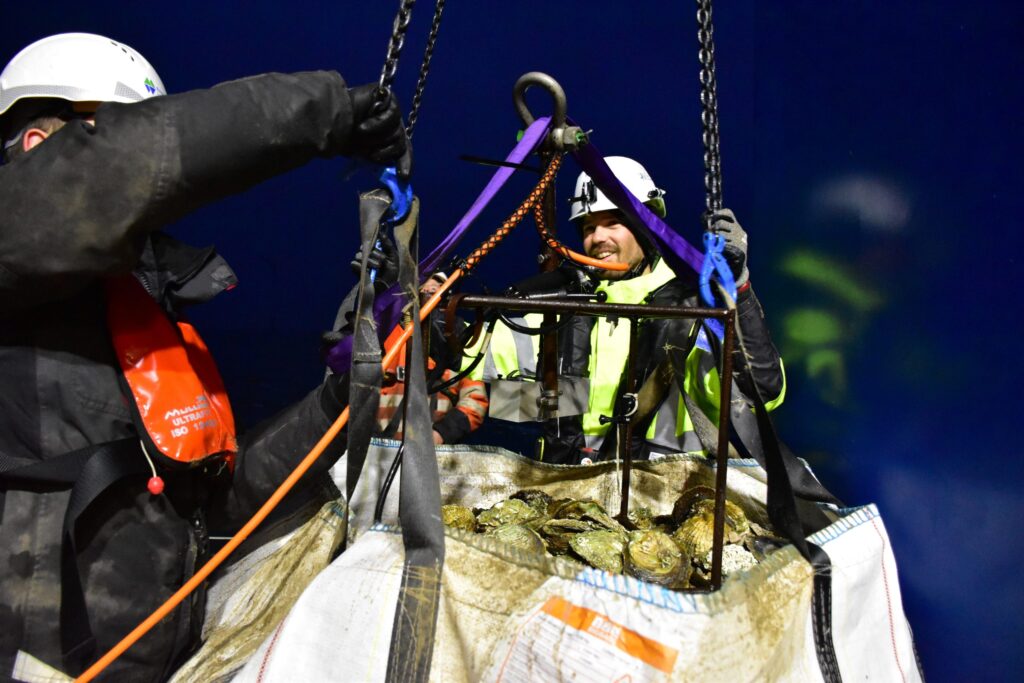
The collaboration
The research
In theory, this site offers a more stable surface for reef development than wind farms farther south along the Dutch coast. To test this, researchers used loose oysters and substrate (shell material and BESE-paste) instead of oyster tables or broodstock structures. The goal was to explore natural reef formation and assess how well oysters could establish themselves in this environment.
Monitoring focused on environmental factors, oyster survival, seabed dynamics, sediment transport, displacement, and settlement. Researchers used ROV and dropcam video footage, water sampling for eDNA analysis, and larvae counts. Innovative techniques included a monitoring frame to assess conditions and settlement, along with oyster tracking to understand movement patterns and reef development over time.
Our role
As the leading partner, The Rich North Sea unites experts in science and industry and coordinates efforts in the Gemini project. By building and monitoring an oyster reef, we’re gaining valuable insights into reef development and dynamics. The knowledge gained from this project will help refine best practices for future artificial reef restoration.
